We know there are some awesome dads out there. But the nominees for best dad must surely include the emperor penguins. These males go to extraordinary extremes for their offspring, enduring the bitter cold of Earth’s coldest continent, Antarctica. If you could visit during winter, you’d find emperor penguin males gathered in colonies near the coast. They’ll be tightly huddled together to stay warm in temperatures that can dip as low as -40 F (-40 C), and strong winds up to 90 miles per hour (144 km/ hour). These devoted penguin dads will each incubate a single egg that holds his offspring and care for his chick when it first hatches. They do all this while surviving only on fat reserves from the previous summer.
It’s autumn in Antarctica now, time for the emperor penguins’ breeding cycle to start.
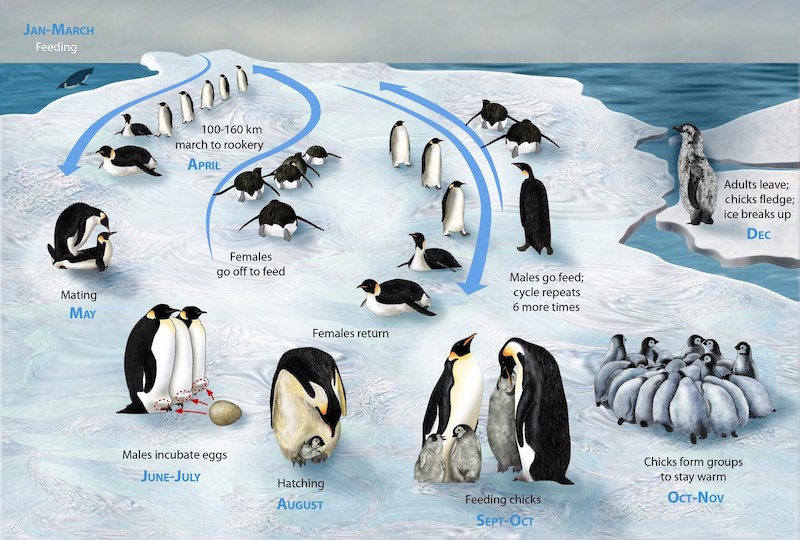
Childcare division among emperor penguins
EarthSky talked to Emperor penguin expert Barbara Wienecke, who is a seabird ecologist at the Australian Antarctic Division. She said:
Why the males are taking care of the incubation rather than the females is somewhat unclear. Males tend to be slightly larger than females and may be able to store more fat. The females also depend on fat reserves since they fast for a good two months before they lay their egg and then head out again. In quite a few bird species, it’s the male who looks after the kids. In Malleefowl, for example, the only thing a female does is lay the eggs. Her partner does the rest.
Wienecke also told EarthSky:
From an evolutionary point, it makes sense that only one parent incubates the egg. We know from our tracking studies that the females potentially could return to the colony and relieve their mates of their incubation duties. But transferring an egg is a very high risk activity at the best of times, and particularly in winter. If the transfer takes too long, the egg freezes. The older the embryo, the quicker it will die.
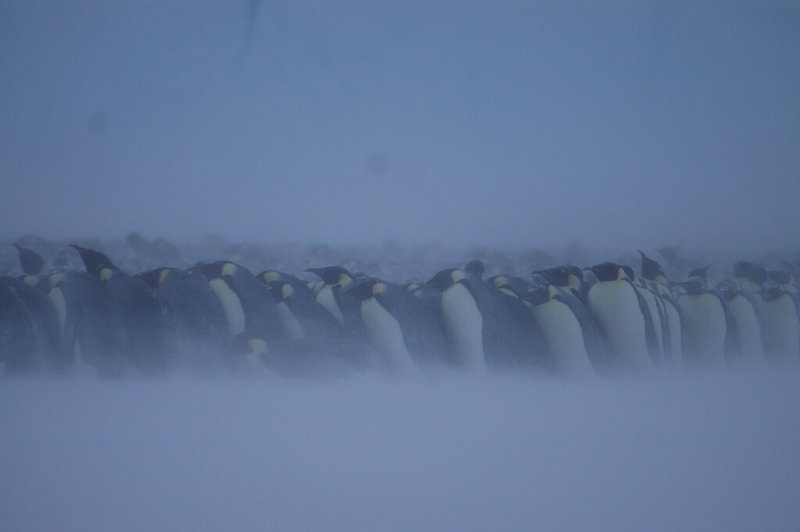
Precious pear-shaped egg
For much of the summer, male and female emperor penguins are at sea, feeding on fish, squid and krill. For the males, this is the time to accumulate the fat reserves they’ll need to survive the next winter.
In April, which is autumn in the Southern Hemisphere, adult emperor penguins begin congregating at their breeding colonies, traveling up to 56 miles (90 km) to reach the pack ice.
Following courtship displays, the birds form pairs and mate. In May and early June, the female lays a single egg. The egg is pear-shaped with a pale greenish-white tint, almost 5 inches long and 3 inches wide (12 by 8 cm). The female penguin passes the egg to her mate, then heads back to sea. She’ll be back in two months to continue her parental duties.
Until then, the males are on their own for winter in Antarctica. Their dense insulating feathers and fat accumulations, however, aren’t enough to keep them alive. During storms, males – as well as females out hunting – huddle close together to conserve heat. They do this by taking turns moving from the edge of the colony, which is colder, to the warmer center.
The egg, meanwhile, is snugly tucked away in dad’s brood pouch, resting on his feet. If all goes well, the chick will hatch in 65 to 75 days. Hatching will likely happen a few days before mom returns. During this time, the chick, weighing just 11 ounces (312 grams) with only a thin layer of down feathers, is completely dependent on dad for warmth and protection. Until mom returns to start feeding the chick, he also provides his offspring with what’s called crop milk, a high fat and protein secretion.
Winter weightloss
Mom returns to the colony, sometime between mid-July and early August, after spending the last two months feeding at sea. She takes over caring for the chick while dad, having eaten nothing but snow for about 120 days, heads to the ocean to start feeding. By now, he has dropped 40% in weight from his summer weight of about 84 pounds (38 kilograms) to around 50 pounds (23 kilograms).
Dad will spend about three to four weeks feeding at sea, then return to his mate. From then on, the pair takes turns caring for their little one, keeping it warm and feeding it regurgitated krill, fish and squid.
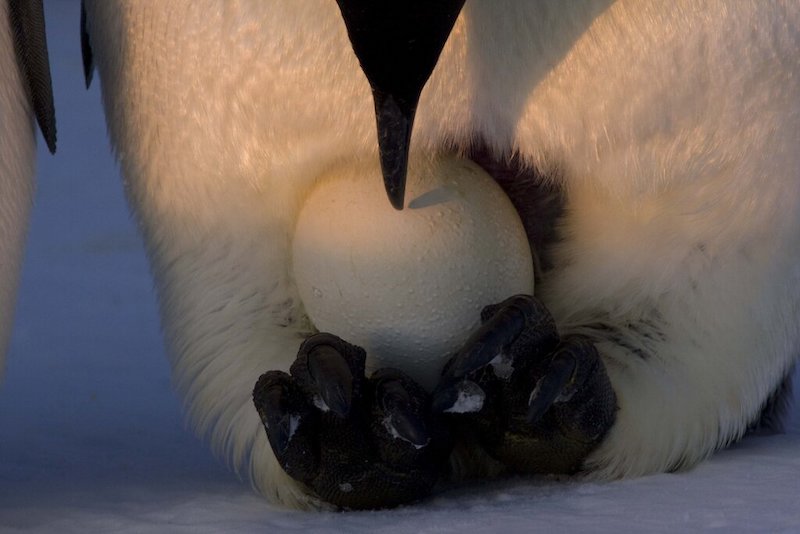
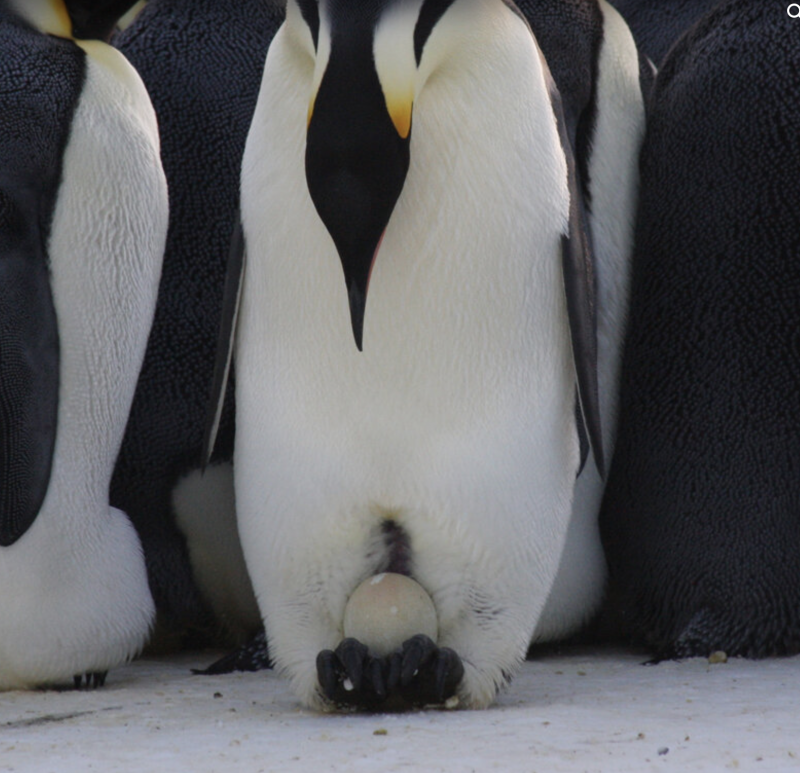
Emperor penguins’ daycare system
About 50 days after hatching, the colony’s chicks, now sporting a thick downy coat, assemble together for warmth and protection in what’s called a crèche. That’s an emperor penguin daycare where the chicks wait for their parents to return from the sea to feed them. Wienecke told EarthSky:
Emperor penguins are very gregarious birds and seek each other’s company. Initially when the first few chicks are left to their own devices in the colony, they will seek other adults and stand near them. As the numbers of chicks who are on their own increases, they crèche (it really looks like a kindergarten: lots of youngsters running around the same area) and start forming chick huddles (the cutest sight imaginable!). In the northern colonies, they tend to do that at night or during inclement weather.
In early November, as spring yields to summer in Antarctica, the chicks undergo a two-month moult, replacing their downy chick feathers with juvenile plumage that will enable them to swim.
By December and January, the chicks are nearly as big as their parents. At this point, mom and dad have done their job and will stop feeding the kids. The youngsters will then venture to sea to start foraging on their own. In about three to four years, they will be old enough to start breeding.
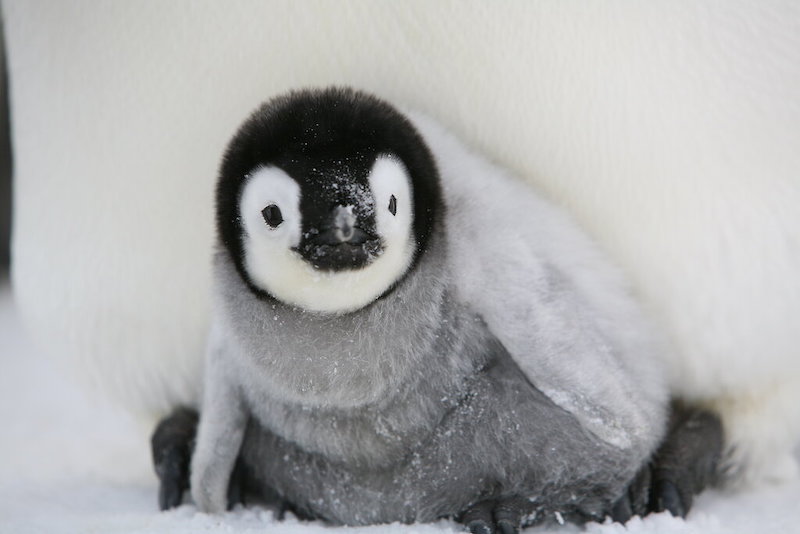
Bottom line: Male emperor penguins are some of the best dads in the world. They incubate their eggs for over two months in the frigid Antarctic winter.

No comments:
Post a Comment